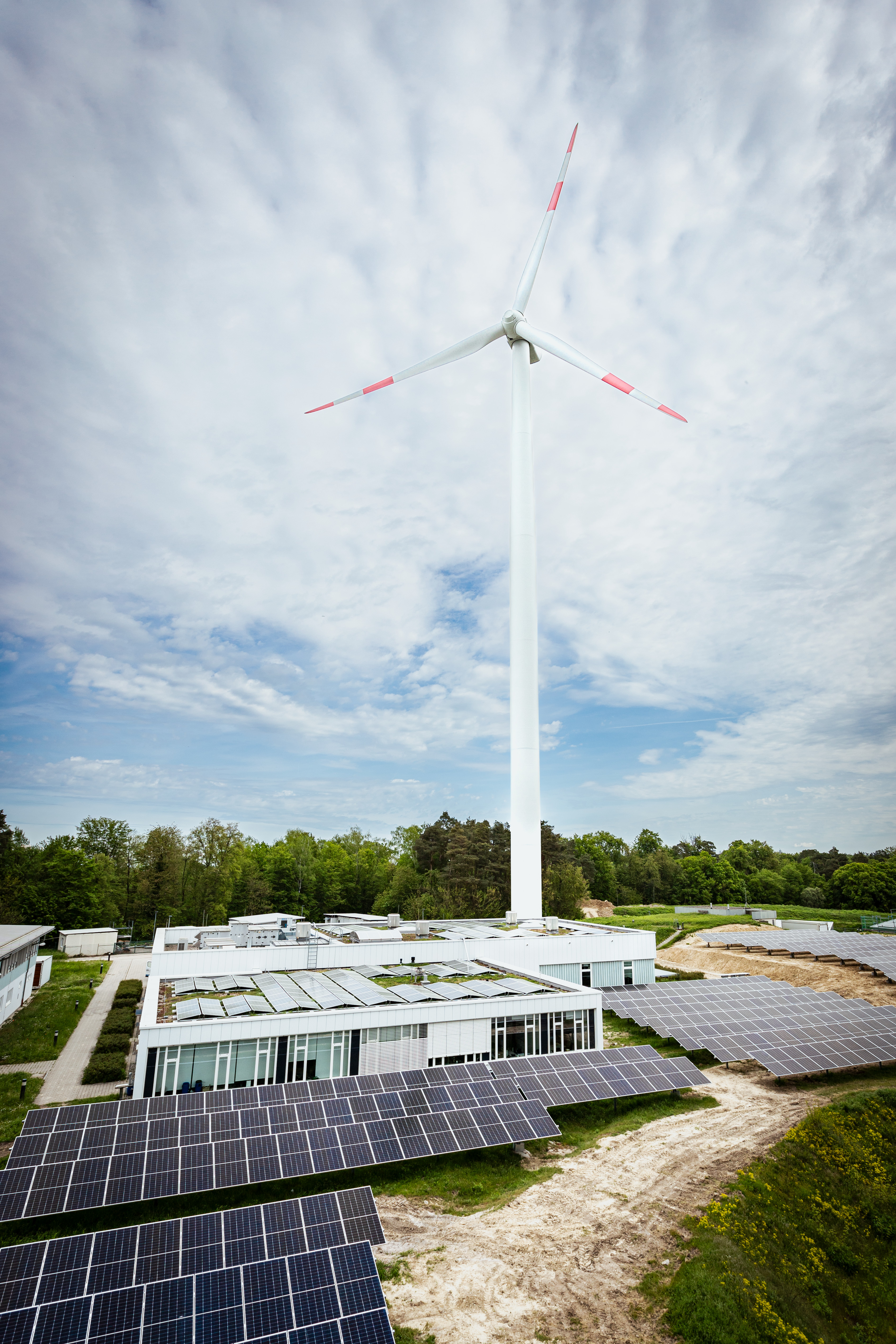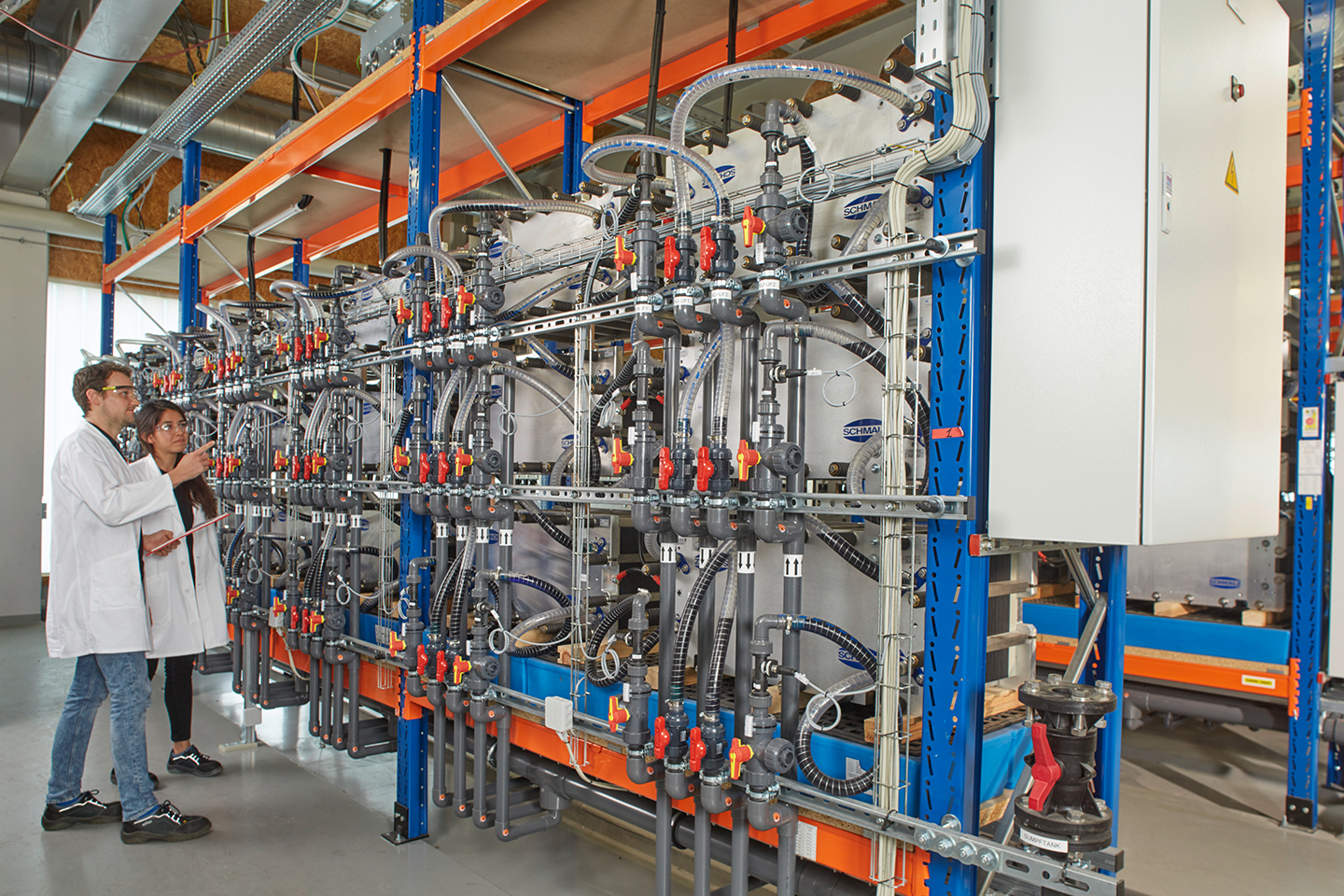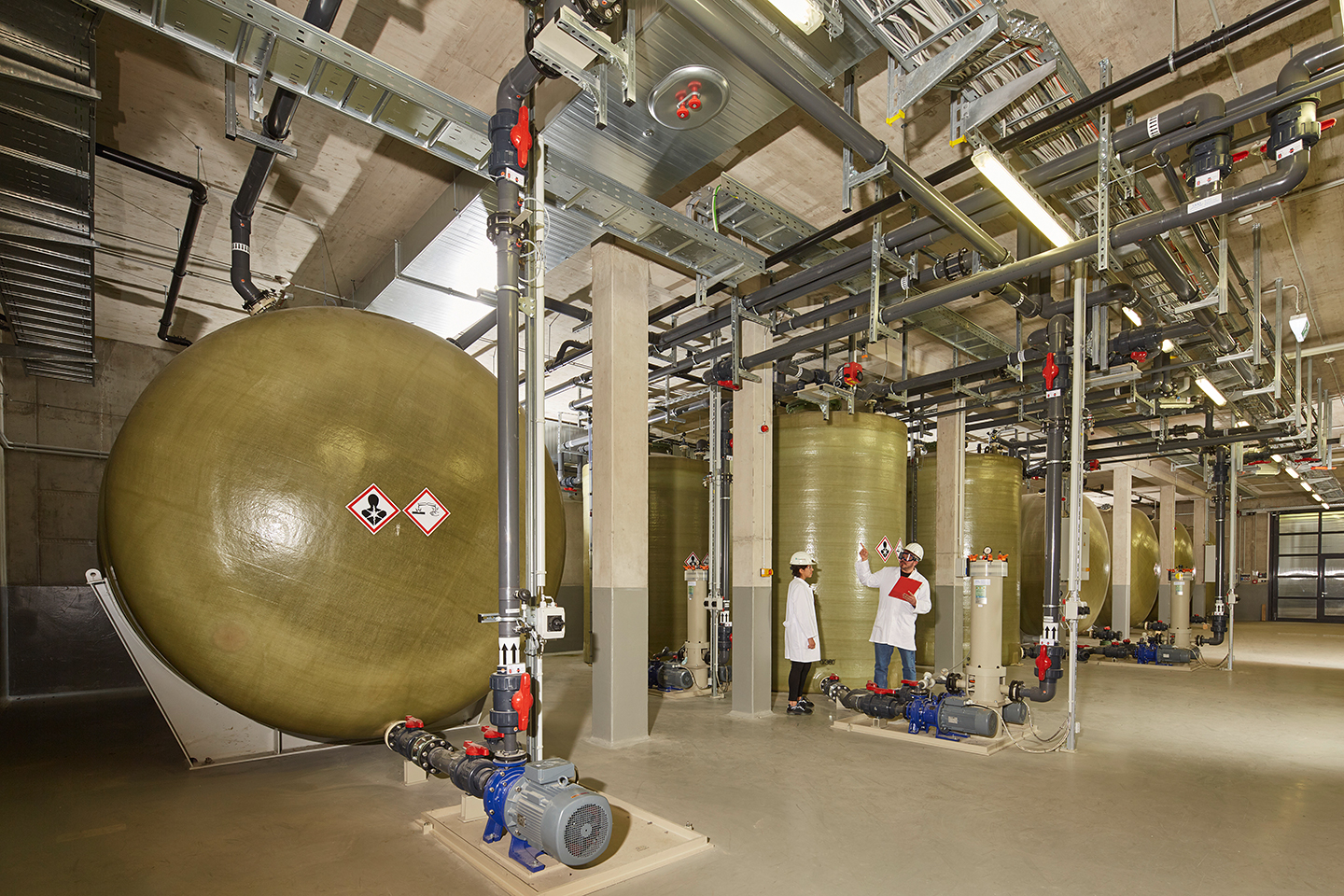Successful start to test operation at Fraunhofer ICT: renewable energy stored in a large-scale battery is introduced into the power grid on demand.
Europe's largest vanadium redox flow battery – located at the Fraunhofer Institute for Chemical Technology - has achieved an important research milestone: In a controlled test, it was possible to successfully demonstrate for the first time how renewable energies such as wind and solar power can be fed into the power grid in a targeted and predictable manner, regardless of current weather conditions.
The large-scale battery therefore offers a concrete solution to a key problem of the energy transition: Surplus green electricity, which often remains unused when generation is high or even leads to negative electricity prices, can now be temporarily stored and retrieved when needed to serve the grid.
"We have shown that renewable energy can be managed intelligently with our storage platform. This is a decisive step towards a stable, flexible and resilient electricity system based on renewable sources," explains Adj. Assoc. Prof. (UNSW, UQ) Dr. Jens Noack, Team Manager for Flow Batteries at Fraunhofer ICT.
The modular vanadium redox flow battery was developed and built using only components and expertise sourced within Germany. It serves as a research and development platform for testing and further developing new storage technologies and components together with industrial partners from Germany and around the world.
 Fraunhofer Institute for Chemical Technology ICT
Fraunhofer Institute for Chemical Technology ICT

